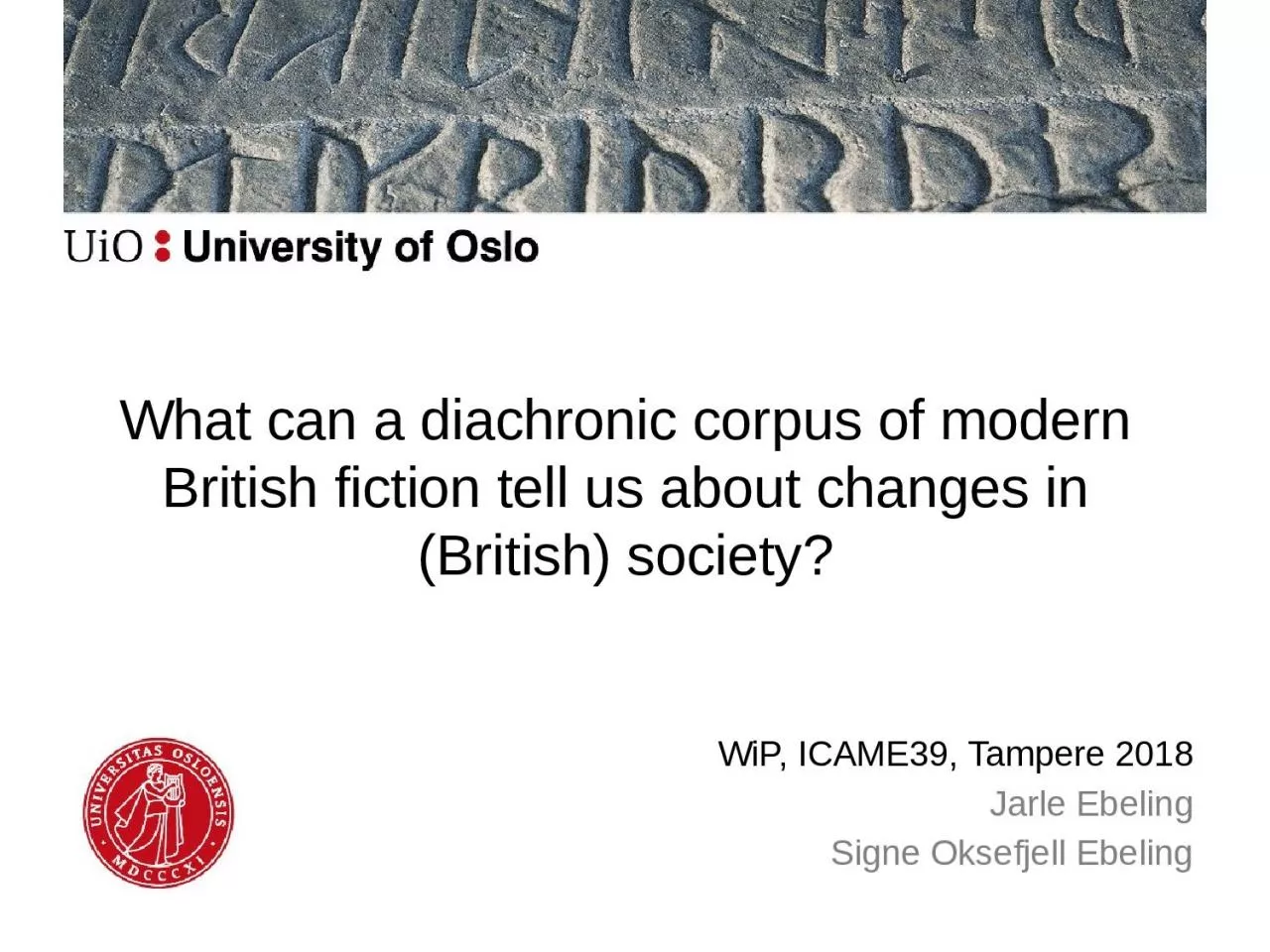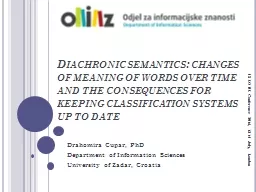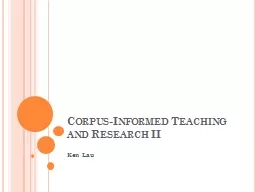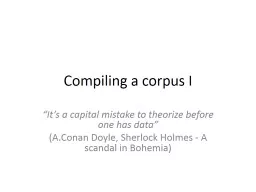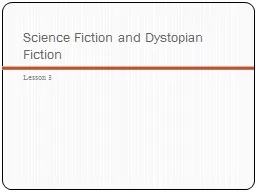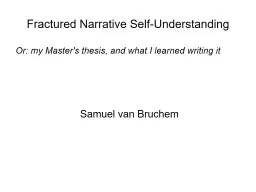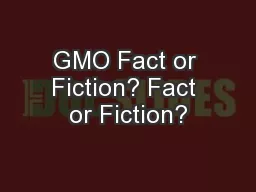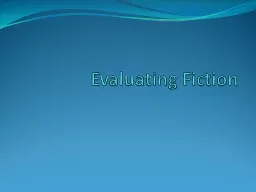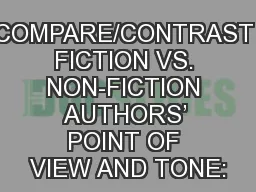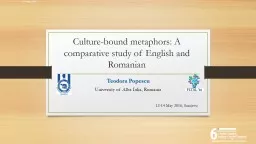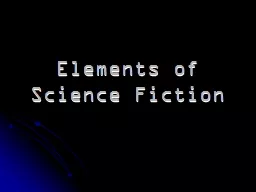PPT-What can a diachronic corpus of modern British fiction tell us about changes in (British)
Author : melanie | Published Date : 2023-06-23
WiP ICAME39 Tampere 2018 Jarle Ebeling Signe Oksefjell Ebeling Aims First explorations of a new resource In what ways does a keyword analysis reflect changes in
Presentation Embed Code
Download Presentation
Download Presentation The PPT/PDF document "What can a diachronic corpus of modern B..." is the property of its rightful owner. Permission is granted to download and print the materials on this website for personal, non-commercial use only, and to display it on your personal computer provided you do not modify the materials and that you retain all copyright notices contained in the materials. By downloading content from our website, you accept the terms of this agreement.
What can a diachronic corpus of modern British fiction tell us about changes in (British): Transcript
Download Rules Of Document
"What can a diachronic corpus of modern British fiction tell us about changes in (British)"The content belongs to its owner. You may download and print it for personal use, without modification, and keep all copyright notices. By downloading, you agree to these terms.
Related Documents

